- Cherry Cultivation: Types and Varieties – Complete Guide
- Introduction
- Types of Cherries
- Cultivation
- Conclusion
- Understanding Cherry Cultivation
- Choosing the Right Variety
- Site Selection and Preparation
- Planting and Pruning
- Watering and Fertilization
- Pest and Disease Management
- Harvesting and Storage
- Selecting the Right Cherry Varieties for Your Garden
- 1. Sweet Cherries
- 2. Tart Cherries
- 3. Self-Fertile Varieties
- 4. Pollination Groups
- 5. Climate Considerations
- Popular Cherry Varieties for Home Gardens
- 1. Bing Cherries
- 2. Rainier Cherries
- 3. Montmorency Cherries
- 4. Stella Cherries
- 5. Black Tartarian Cherries
- 6. Lapins Cherries
- 7. Sweetheart Cherries
- The Benefits of Growing Cherries in Your Garden
- 1. Fresh, Delicious Fruit
- 2. Nutritional Value
- 3. Versatile Culinary Ingredient
- 4. Landscape Beauty
- 5. Environmentally Friendly
- 6. Cost Savings
- Pruning Techniques for Cherry Trees
- 1. Prune during the dormant season
- 2. Remove dead, diseased, and damaged wood
- 3. Thin out crowded branches
- 4. Prune for shape and size control
- 5. Train young cherry trees
- 6. Prune for fruit production
- Best Practices for Cherry Tree Disease Prevention
- 1. Choose Disease-Resistant Varieties
- 2. Maintain Proper Tree Spacing
- 3. Prune Regularly
- 4. Maintain Cleanliness in the Garden
- 5. Provide Adequate Watering and Drainage
- 6. Use Organic Pest Control Methods
- 7. Monitor for Signs of Diseases
- Harvesting and Storing Cherries: Tips and Tricks
- 1. Harvesting Cherries:
- 2. Storing Cherries:
- 3. Freezing Cherries:
- Delicious Recipes Using Fresh Cherries
- 1. Cherry Pie
- 2. Cherry Smoothie
- 3. Cherry Salad
- 4. Cherry Clafoutis
- Question-answer:
- What are some important things to consider when cultivating cherry trees in the garden?
- What are some popular types of cherry trees?
- How long does it take for a cherry tree to bear fruit?
- What are some common pests and diseases that can affect cherry trees?
- Can cherry trees grow in all types of soil?
- How should cherry trees be pruned?
- What are some tips for harvesting cherries?
- Video: How to Grow Cherries, Complete Growing Guide and Harvest
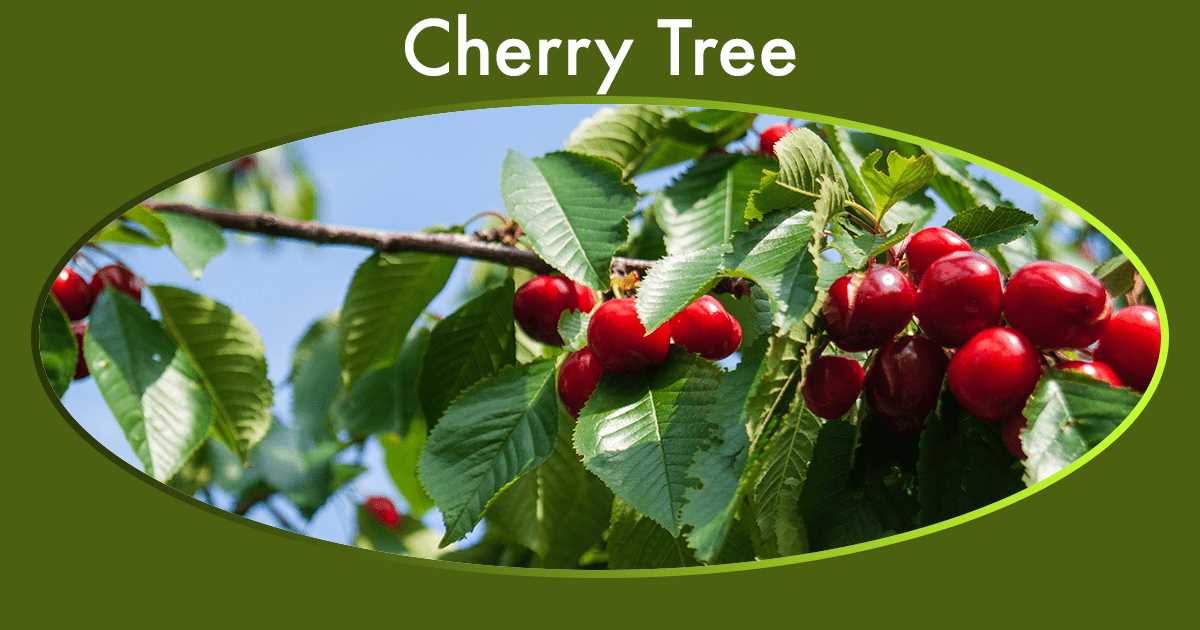
Welcome to our complete guide on cultivating cherries in your garden. Cherries are a delicious and popular fruit that can be enjoyed fresh, processed into jams and jellies, or used in a variety of culinary dishes. In this guide, we will take you through the steps of successfully growing your own cherry trees, as well as discussing the different types and varieties of cherries available.
Why grow cherries in your garden?
Growing cherries in your garden can be a rewarding experience. Not only will you have a ready supply of sweet, juicy fruit right at your fingertips, but cherry trees also add beauty and variety to your landscape. The blossoms of cherry trees are stunning in the spring, and the vibrant red fruit hanging from the branches in the summer is a sight to behold. Furthermore, growing your own cherries means you can ensure they are organic and free of any harmful pesticides or chemicals.
Types and varieties of cherries
There are two main types of cherries: sweet cherries (Prunus avium) and sour cherries (Prunus cerasus). Sweet cherries are typically eaten fresh and have a mild, sweet flavor. Sour cherries, on the other hand, have a tangy, tart flavor and are commonly used in baking and cooking.
Note: The information provided in this guide is suitable for both sweet and sour cherry varieties.
Within each type, there are numerous varieties of cherries to choose from. Popular sweet cherry varieties include Bing, Rainier, and Stella, while popular sour cherry varieties include Montmorency and Morello. Each variety has its own unique flavor profile, size, and color.
Now that we’ve provided an overview of cherries and their benefits, let’s dive into the details of cultivating cherries in your garden. Whether you’re a beginner or an experienced gardener, this guide will provide you with all the information you need to successfully grow and enjoy your own cherries.
Cherry Cultivation: Types and Varieties – Complete Guide
Introduction
Cherries are delicious fruits that are often grown in gardens for their sweet and tangy flavor. They are also an attractive addition to any landscape with their beautiful blossoms in spring. This complete guide will provide an overview of cherry cultivation, including the different types and varieties available.
Types of Cherries
There are two main types of cherries that are commonly grown: sweet cherries (Prunus avium) and sour cherries (Prunus cerasus).
- Sweet cherries: Sweet cherries are larger and have a sweeter flavor. They are usually eaten fresh and are commonly used in desserts. Some popular sweet cherry varieties include Bing, Rainier, and Black Tartarian.
- Sour cherries: Sour cherries are smaller and have a sour or tart flavor. They are often used for cooking and making preserves. Some popular sour cherry varieties include Montmorency and Morello.
Cultivation
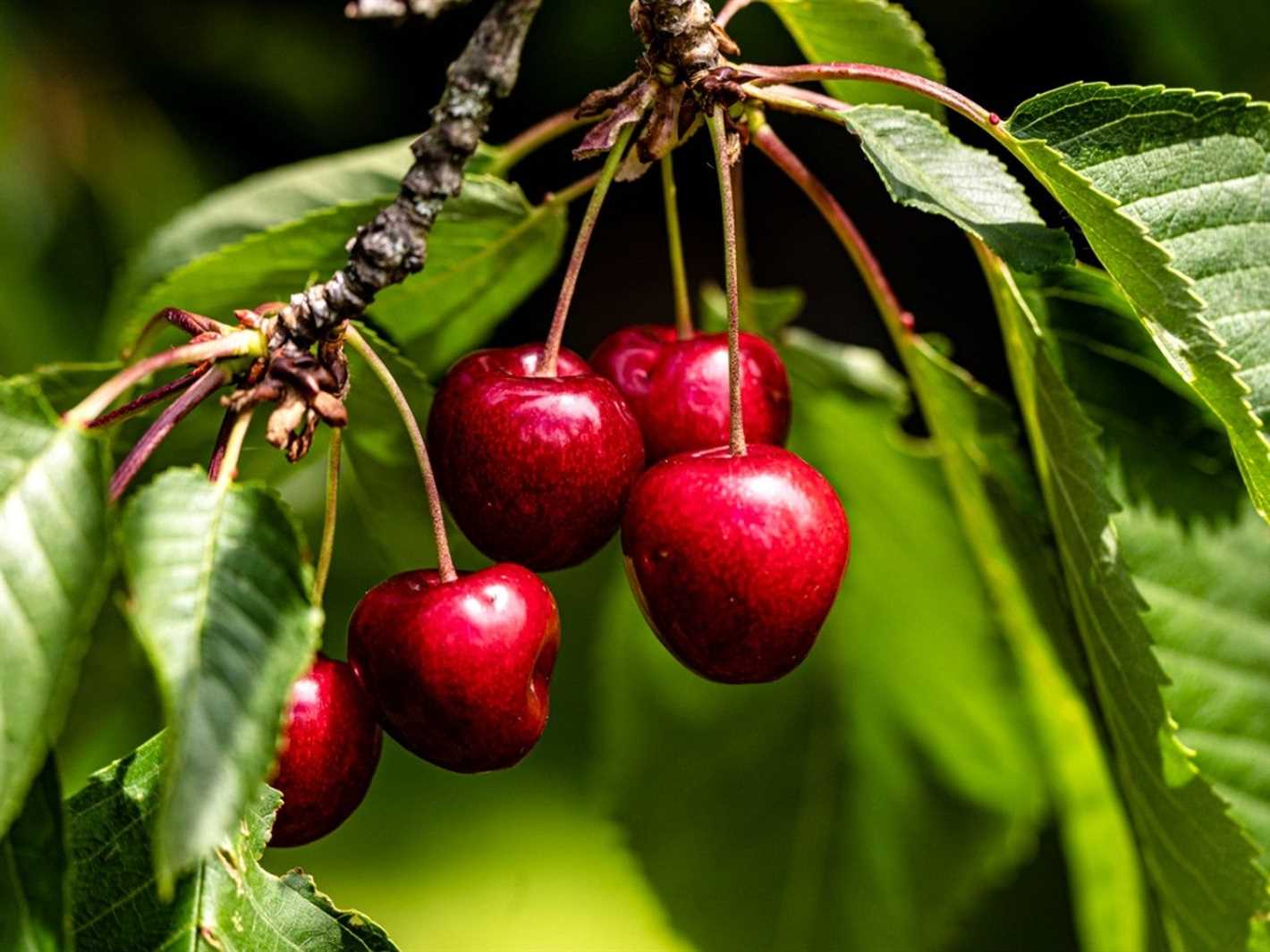

Cherries can be grown in a variety of climates, but they prefer regions with cool winters and mild summers. Here are some key points to consider when cultivating cherries:
- Location: Choose a sunny spot in your garden with well-drained soil.
- Planting: Plant cherry trees in the early spring or fall. Dig a hole that is wide and deep enough to accommodate the root system of the tree. Place the tree in the hole, making sure the bud union (graft) is at least 2 inches above the soil level. Fill the hole with soil and water thoroughly.
- Pruning: Prune cherry trees during the dormant season to remove dead or diseased branches and maintain an open shape. This will improve air circulation and sunlight penetration.
- Watering: Cherries require regular watering, especially during dry periods. Water deeply and evenly to ensure the roots are adequately hydrated.
- Fertilizing: Apply a balanced fertilizer in early spring and again in late spring or early summer to promote healthy growth and fruit production.
- Pest and Disease Control: Cherries can be susceptible to certain pests and diseases such as cherry fruit fly and cherry leaf spot. Monitor your trees regularly and take appropriate measures to control any infestations.
- Harvesting: Sweet cherries are typically harvested when they are fully ripe and can be easily detached from the stem. Sour cherries are usually harvested when they are still slightly underripe for cooking purposes.
Conclusion
Cherries are a delightful fruit to grow in your garden, providing both beauty and delicious flavor. By selecting the right types and varieties, and following proper cultivation techniques, you can enjoy a bountiful harvest of cherries year after year.
Understanding Cherry Cultivation
Cherry cultivation is the process of growing cherry trees specifically for the purpose of producing fruit. Cherries are popular fruits known for their sweet and tart flavors, making them a favorite ingredient in various culinary dishes and desserts.
Choosing the Right Variety
There are different types and varieties of cherry trees available, each with its own unique characteristics. When starting cherry cultivation, it is important to choose the right variety that is suitable for your climate, soil type, and intended use of the fruit. Some popular cherry tree varieties include Bing, Rainier, and Montmorency.
Site Selection and Preparation
Cherry trees thrive in well-drained soil and require full sun exposure for optimal growth and fruit production. When selecting a site for cherry cultivation, it is essential to choose a location with good air circulation to prevent the development of diseases. The soil should be prepared by removing weeds and incorporating organic matter to improve fertility and drainage.
Planting and Pruning
Cherry trees should be planted in early spring or fall, ensuring that the roots are well-established before the onset of winter or summer. Proper spacing is crucial to allow sufficient airflow and sunlight penetration between the trees. Pruning is necessary to maintain the shape and size of the tree, promote better fruiting, and remove any diseased or damaged branches.
Watering and Fertilization
Regular watering is vital during the growing season, especially during dry periods. Cherry trees require a consistent moisture level to prevent stress and ensure healthy fruit development. Fertilization should be done based on soil testing and the specific nutrient requirements of the cherry tree variety being cultivated.
Pest and Disease Management
Cherry trees are susceptible to various pests and diseases, including aphids, cherry fruit fly, bacterial canker, and powdery mildew. Regular monitoring and appropriate pest and disease management practices, such as using organic insecticides or implementing cultural control methods, can help prevent and control infestations.
Harvesting and Storage
Cherries are typically harvested when they reach their desired size, color, and taste. Depending on the variety, cherries can be harvested by hand or through mechanical methods. After harvesting, cherries should be stored in a cool and dry place or refrigerated to maintain their freshness and extend their shelf life.
| Common Cherry Varieties | Characteristics |
|---|---|
| Bing | Large, dark red, sweet |
| Rainier | Yellow, sweet with a hint of tartness |
| Montmorency | Tart, bright red, excellent for pies |
Selecting the Right Cherry Varieties for Your Garden
When it comes to growing cherries in your garden, selecting the right variety is crucial. Different cherry varieties have different characteristics and requirements, so it’s important to choose the ones that are best suited to your garden and climate.
1. Sweet Cherries
Sweet cherries are the most popular type of cherry and are perfect for eating fresh. They come in a wide range of colors, including red, yellow, and black. Some popular sweet cherry varieties include Bing, Rainier, and Stella.
- Bing: Bing cherries are large, juicy, and have a deep red color. They are sweet in flavor and have a firm texture. Bing cherries are a popular choice for fresh eating.
- Rainier: Rainier cherries are yellow with a red blush and have a sweet and delicate flavor. They are known for their high sugar content and are often considered one of the best-tasting cherries.
- Stella: Stella cherries are a dark red to almost black color and have a sweet and rich flavor. They are self-fertile, meaning they do not require another cherry tree for pollination.
2. Tart Cherries
Tart cherries, also known as sour cherries, are smaller and more acidic than sweet cherries. They are commonly used for cooking and making preserves, juices, and pies. Some popular tart cherry varieties include Montmorency, Balaton, and Morello.
- Montmorency: Montmorency cherries are bright red and have a tangy flavor. They are the most widely grown tart cherry variety in the United States and are known for their excellent taste.
- Balaton: Balaton cherries are a dark red to almost black color and have a sweet-tart flavor. They are known for their firm flesh and are great for both fresh eating and cooking.
- Morello: Morello cherries are a deep red to almost black color and have a distinctive sour flavor. They are often used in baking and make delicious cherry pies.
3. Self-Fertile Varieties
If you have limited space in your garden, consider planting self-fertile cherry varieties. These varieties do not require another cherry tree for cross-pollination and can produce fruit on their own. Some self-fertile sweet cherry varieties include Stella, Lapins, and BlackGold.
4. Pollination Groups
For cherry trees that require cross-pollination, it’s important to consider the pollination groups. Cherry trees need a different variety within the same pollination group to produce fruit. Pollination groups are labeled as A, B, C, etc. It’s best to plant cherry varieties with the same pollination group in close proximity to each other for successful pollination.
5. Climate Considerations
When selecting cherry varieties for your garden, take into account your climate and growing conditions. Some cherry varieties are better suited to cooler climates, while others can tolerate warmer temperatures. Research the cold hardiness and heat tolerance of different cherry varieties before making your selection.
| Type | Varieties |
|---|---|
| Sweet | Bing, Rainier, Stella |
| Tart | Montmorency, Balaton, Morello |
| Self-Fertile | Stella, Lapins, BlackGold |
By selecting the right cherry varieties for your garden, you can enjoy a bountiful harvest of delicious cherries year after year. Consider the different types, flavors, and pollination requirements to ensure successful cherry cultivation in your garden.
Popular Cherry Varieties for Home Gardens
Cherries are a popular fruit tree to grow in home gardens, as they are not only delicious but also add beauty and color to the landscape. There are many different varieties of cherries available, each with their own unique characteristics. Here are some popular cherry varieties that are well-suited for home gardens:
1. Bing Cherries
Bing cherries are known for their large size and deep red color. They have a sweet and juicy flavor, making them perfect for eating fresh or for use in desserts and preserves. Bing cherries are a popular variety for home gardens due to their vigorous growth and high productivity.
2. Rainier Cherries
Rainier cherries are easily recognizable by their yellow skin with a blush of red. They have a delicate and sweet flavor, making them a favorite for many cherry lovers. Rainier cherries are also popular in home gardens because they are easy to grow and relatively disease-resistant.
3. Montmorency Cherries
Montmorency cherries are a tart variety that is commonly used for baking and cooking. They have a bright red skin and firm flesh, making them ideal for making cherry pies, tarts, and other desserts. Montmorency cherries are also popular for home gardens due to their cold hardiness and ability to pollinate other cherry varieties.
4. Stella Cherries
Stella cherries are a self-fertile variety, which means they do not require another cherry tree for pollination. They have a dark red skin and a sweet, juicy flavor. Stella cherries are popular for home gardens because they are relatively easy to grow and produce a high yield of fruit.
5. Black Tartarian Cherries
Black Tartarian cherries are a favorite among cherry enthusiasts for their sweet and rich flavor. They have a dark red to black skin and juicy flesh. Black Tartarian cherries are often used for eating fresh or for making cherry juice and wine. They are also a popular choice for home gardens due to their productivity and resistance to disease.
6. Lapins Cherries
Lapins cherries are a late-season variety, meaning they ripen later in the season compared to other cherry varieties. They have a dark red to black skin and a sweet, rich flavor. Lapins cherries are popular for home gardens because they are self-fertile and have a high yield of fruit. They are also known for their resistance to cracking.
7. Sweetheart Cherries
Sweetheart cherries are a large and heart-shaped variety with a deep red skin. They have a sweet and flavorful taste, making them a popular choice for fresh eating. Sweetheart cherries are also known for their firm texture, which makes them great for cooking and baking. They are a popular choice for home gardens due to their ability to withstand cold temperatures.
These are just a few popular cherry varieties that are well-suited for home gardens. When choosing a cherry tree for your garden, consider factors such as your climate, available space, and desired flavor. With proper care and maintenance, you can enjoy a bountiful harvest of delicious cherries right from your own backyard.
The Benefits of Growing Cherries in Your Garden
Growing cherries in your garden can provide numerous benefits, both for your well-being and for your culinary adventures. Here are some reasons why you should consider adding cherry trees to your garden:
1. Fresh, Delicious Fruit
By growing your own cherries, you can enjoy the pleasure of picking fresh, ripe fruit right from your backyard. Cherries are known for their vibrant, sweet-tart flavor, and eating them straight from the tree is a true delight. Imagine the taste of a perfectly juicy cherry bursting in your mouth!
2. Nutritional Value
Cherries offer a range of health benefits. They are packed with essential nutrients such as vitamins C and A, potassium, and antioxidants. These nutrients can strengthen your immune system, promote heart health, and improve brain function. Including cherries in your diet can help you maintain a healthy lifestyle.
3. Versatile Culinary Ingredient
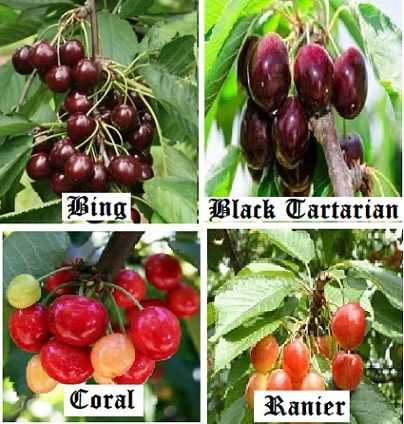

Cherries are a versatile fruit that can be used in various culinary applications. Whether you love baking pies, making jams, or creating unique sauces, cherries can add a burst of flavor and vibrant color to your recipes. They can also be used in savory dishes, salads, and desserts. With cherries in your garden, you can explore endless possibilities in your kitchen.
4. Landscape Beauty
In addition to their delicious fruit, cherry trees bring beauty and charm to your garden landscape. With their stunning spring blooms and lush green foliage, cherry trees make a visually appealing addition to any garden. The sight of cherry blossoms in full bloom is a breathtaking experience that can enhance the aesthetic appeal of your outdoor space.
5. Environmentally Friendly
Growing your own cherries is an environmentally friendly choice. By cultivating cherry trees in your garden, you contribute to the preservation of the ecosystem. Cherries trees provide habitats for birds and insects, support biodiversity, and contribute to the overall health of the environment. Additionally, growing your own cherries reduces the need for transportation and packaging associated with store-bought fruit, helping to reduce your carbon footprint.
6. Cost Savings
While there may be an initial investment in purchasing and planting cherry trees, growing your own cherries can save you money in the long run. Cherries can be expensive when purchased at the grocery store or farmers market, especially during their peak season. By having your own cherry trees, you can enjoy a bountiful supply of fruit without the need to buy them at high prices. Plus, you can share the harvest with friends and neighbors, spreading the joy of homegrown cherries.
Overall, growing cherries in your garden can bring joy, health benefits, and delicious flavors to your life. Whether you are an experienced gardener or a beginner, adding cherry trees to your garden is a rewarding endeavor that you won’t regret.
Pruning Techniques for Cherry Trees
Pruning is an essential practice for maintaining the health and productivity of cherry trees. When done correctly, pruning helps to improve the structure of the tree, promote air circulation, and remove diseased or damaged wood. Here are some pruning techniques for cherry trees:
1. Prune during the dormant season
The best time to prune cherry trees is during the dormant season, which is typically in late winter or early spring before new growth begins. Pruning during this time minimizes stress on the tree and allows for better healing of wounds.
2. Remove dead, diseased, and damaged wood
Start by removing any dead, diseased, or damaged wood from the tree. This includes branches that are broken, have signs of disease or insect infestation, or show significant dieback. Cut back to healthy tissue, just outside the branch collar, to promote healing.
3. Thin out crowded branches
Cherry trees tend to produce a dense canopy, which can lead to poor air circulation and increase the risk of disease. To improve airflow and light penetration, selectively remove some of the branches, especially those that are crossing or rubbing against each other. Aim to maintain an open canopy with evenly spaced branches.
4. Prune for shape and size control
Cherry trees can become quite large, and pruning is necessary to control their size and shape. To maintain a manageable height and spread, selectively prune back the branches, focusing on removing vigorous upright growth. Avoid removing more than one-third of the tree’s foliage in a single season to prevent excessive stress.
5. Train young cherry trees
When pruning young cherry trees, it’s important to train them into a strong framework. Select a central leader and remove competing branches that are directly under or over it. Also, remove any branches that are growing at narrow angles or crossing over each other. This will help establish a well-balanced and structurally sound tree.
6. Prune for fruit production
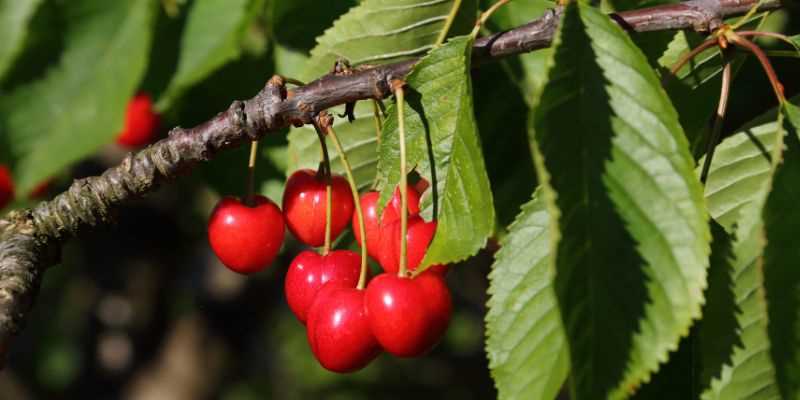

To promote fruit production, it’s important to remove some of the older wood to stimulate new growth. Look for older branches that haven’t been productive and prune them back to an outward-facing bud or lateral branch. This will redirect the tree’s energy towards new growth and encourage the development of fruiting spurs.
Remember to use clean and sharp pruning tools, such as pruning shears or loppers, to make clean cuts and minimize the risk of disease transmission. After pruning, consider applying a pruning sealant to larger cuts to aid in healing. Regular pruning will keep your cherry trees healthy, productive, and aesthetically pleasing.
Best Practices for Cherry Tree Disease Prevention
1. Choose Disease-Resistant Varieties
When selecting cherry tree varieties for your garden, choose those that are known to be resistant to common diseases. Some popular disease-resistant cherry tree varieties include Stella, Lapins, and Rainier. These varieties are less susceptible to diseases and can help prevent the spread of infections in your garden.
2. Maintain Proper Tree Spacing
Properly spaced trees allow for better air circulation, which helps prevent the spread of diseases. Avoid planting cherry trees too close together, as crowded trees create a favorable environment for fungal and bacterial infections. Follow the recommended spacing guidelines provided by experts or nurseries to ensure adequate airflow and prevent disease outbreaks.
3. Prune Regularly
Regular pruning is essential for maintaining healthy cherry trees. Remove any dead, damaged, or diseased branches as soon as you notice them. Pruning helps improve air circulation and sunlight penetration, reducing the risk of diseases. Additionally, proper pruning techniques can help shape the tree and promote better fruit production.
4. Maintain Cleanliness in the Garden
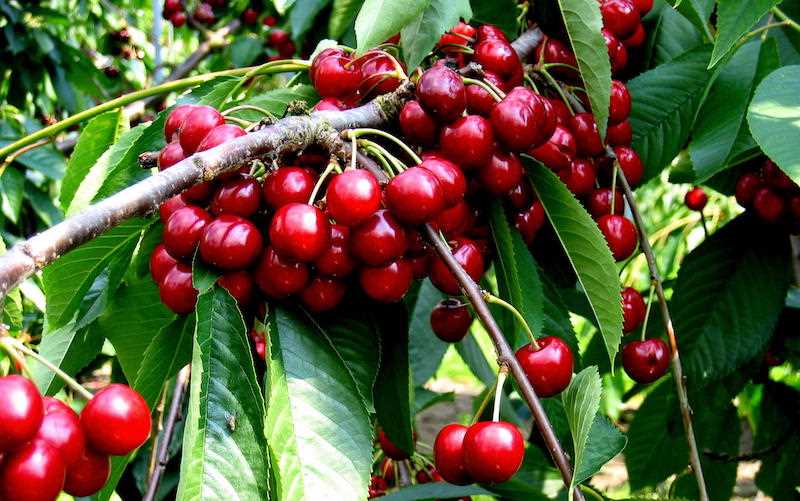

Keep your garden clean and free from plant debris, fallen leaves, and fruit leftovers. These materials can harbor diseases and pests, providing a breeding ground for infections. Regularly remove fallen leaves and fruits, and dispose of them away from the garden area. Clean gardening tools between uses to prevent the spread of pathogens.
5. Provide Adequate Watering and Drainage
Cherry trees prefer moderate watering, and overwatering can contribute to the development of root rot and other diseases. Establish a regular watering schedule and ensure proper drainage around the tree. Avoid waterlogging the soil, as excess moisture promotes fungal growth. Consider using drip irrigation or soaker hoses to provide consistent, deep watering without wetting the leaves and branches.
6. Use Organic Pest Control Methods
Some pests can weaken cherry trees and make them more susceptible to diseases. Utilize organic pest control methods, such as Ladybugs, praying mantises, and neem oil, to keep pest populations under control. Avoid using harsh chemical pesticides that can harm beneficial insects and disrupt the ecosystem.
7. Monitor for Signs of Diseases
Regularly inspect your cherry trees for any signs of diseases, such as discoloration, lesions, or unusual growth. Early detection allows for prompt intervention and effective disease management. If you notice any abnormalities, consult with a local horticulturist or extension office to identify and address the issue.
By following these best practices for cherry tree disease prevention, you can enhance the health and productivity of your cherry trees. A proactive approach to disease management is crucial in maintaining a thriving garden.
Harvesting and Storing Cherries: Tips and Tricks
Harvesting cherries at the right time and storing them properly is essential to enjoy their delicious flavor for a longer period. Here are some tips and tricks to help you harvest and store cherries:
1. Harvesting Cherries:
- Cherries are ready to be harvested when they have reached their full color and are slightly soft to the touch. They should easily detach from the stem with a gentle twist.
- Harvest cherries during the cooler parts of the day to prevent spoilage.
- Use a ladder or a long harvesting pole with a basket to reach higher branches.
- Handle cherries carefully to avoid bruising or damaging the fruit.
- Avoid harvesting cherries during or after rainfall, as this can cause the fruit to split or become susceptible to diseases.
2. Storing Cherries:
- Sort cherries carefully, removing any damaged or overripe fruits. This will prevent them from spoiling the rest of the batch.
- Store cherries in a single layer to avoid crushing the fruit. Line a shallow container with paper towels to absorb excess moisture.
- Place cherries in the refrigerator immediately after harvesting to maintain their freshness and flavor.
- Cherries can be stored in the refrigerator for up to two weeks, but it’s best to consume them as soon as possible for the best taste.
3. Freezing Cherries:
- If you have an abundance of cherries, consider freezing them for later use.
- Wash and pit the cherries before freezing. Place them in a single layer on a baking sheet lined with parchment paper and freeze until firm.
- Once frozen, transfer the cherries to airtight freezer bags or containers. Label them with the date for easy identification.
- Frozen cherries can be used in smoothies, desserts, or as a snack. They can be stored in the freezer for up to a year.
By following these tips and tricks, you can enjoy the harvest of cherries from your garden and have a supply of cherries to enjoy throughout the year.
Delicious Recipes Using Fresh Cherries
1. Cherry Pie
A classic dessert, cherry pie is a delicious way to showcase the natural sweetness of fresh cherries. Here’s a simple recipe:
- Preheat your oven to 375°F.
- Prepare your pie crust or use a pre-made one.
- In a large bowl, mix together fresh cherries, sugar, cornstarch, lemon juice, and a pinch of salt.
- Pour the cherry mixture into the pie crust and cover with a second crust or lattice pattern.
- Brush the crust with egg wash and sprinkle with sugar.
- Bake for about 45 minutes or until the crust is golden brown and the filling is bubbly.
- Let the pie cool before serving.
2. Cherry Smoothie
A refreshing and healthy option, cherry smoothie is perfect for a quick morning breakfast or a post-workout snack. Here’s how to make it:
- In a blender, combine fresh cherries, a banana, plain yogurt, milk, honey, and a handful of ice cubes.
- Blend until smooth and creamy.
- Pour into a glass and serve immediately.
3. Cherry Salad
A colorful and vibrant salad, cherry salad is not only delicious but also packed with nutrients. Here’s a simple recipe:
- In a large bowl, combine fresh cherries, mixed greens, crumbled feta cheese, sliced almonds, and dried cranberries.
- In a small bowl, whisk together olive oil, balsamic vinegar, honey, salt, and pepper to make the dressing.
- Pour the dressing over the salad and toss gently to combine.
- Serve the cherry salad immediately as a side dish or add grilled chicken for a complete meal.
4. Cherry Clafoutis
A traditional French dessert, cherry clafoutis is a custard-like dish that is perfect for showcasing cherries. Here’s how to make it:
- Preheat your oven to 350°F.
- In a blender, combine fresh cherries, milk, sugar, flour, eggs, vanilla extract, and a pinch of salt.
- Blend until smooth.
- Pour the mixture into a greased baking dish.
- Bake for about 45 minutes or until the clafoutis is set and golden brown.
- Sprinkle with powdered sugar before serving.
Question-answer:
What are some important things to consider when cultivating cherry trees in the garden?
When cultivating cherry trees in the garden, it is important to consider the amount of sunlight the tree will receive, the type of soil, and the necessary spacing between the trees. It is also important to prune and fertilize the trees properly and protect them from pests and diseases.
What are some popular types of cherry trees?
There are several popular types of cherry trees, including sweet cherries and sour cherries. Some popular varieties of sweet cherries include Bing, Rainier, and Stella. Popular sour cherry varieties include Montmorency and Morello.
How long does it take for a cherry tree to bear fruit?
The time it takes for a cherry tree to bear fruit can vary depending on the type of cherry tree and growing conditions. Generally, sweet cherry trees can begin to bear fruit after about 3 to 5 years, while sour cherry trees may start bearing fruit in as little as 2 to 3 years.
What are some common pests and diseases that can affect cherry trees?
Common pests that can affect cherry trees include aphids, cherry fruit flies, and cherry slugs. Diseases that can affect cherry trees include brown rot, bacterial canker, and cherry leaf spot.
Can cherry trees grow in all types of soil?
Cherry trees prefer well-draining soil that is rich in organic matter. They can tolerate a range of soil types, but sandy loam or loamy soil is considered the best for cherry tree cultivation. The pH level of the soil should be slightly acidic to neutral.
How should cherry trees be pruned?
Cherry trees should be pruned in late winter or early spring before the new growth begins. It is important to remove any dead, damaged, or diseased branches. It is also recommended to thin out the branches to allow better air circulation and light penetration.
What are some tips for harvesting cherries?
When harvesting cherries, it is important to pick them when they are fully ripe. Cherries should be firm and have a shiny appearance. Care should be taken not to damage the fruit or the tree when harvesting. It is recommended to use a gentle twisting motion when picking the cherries.







